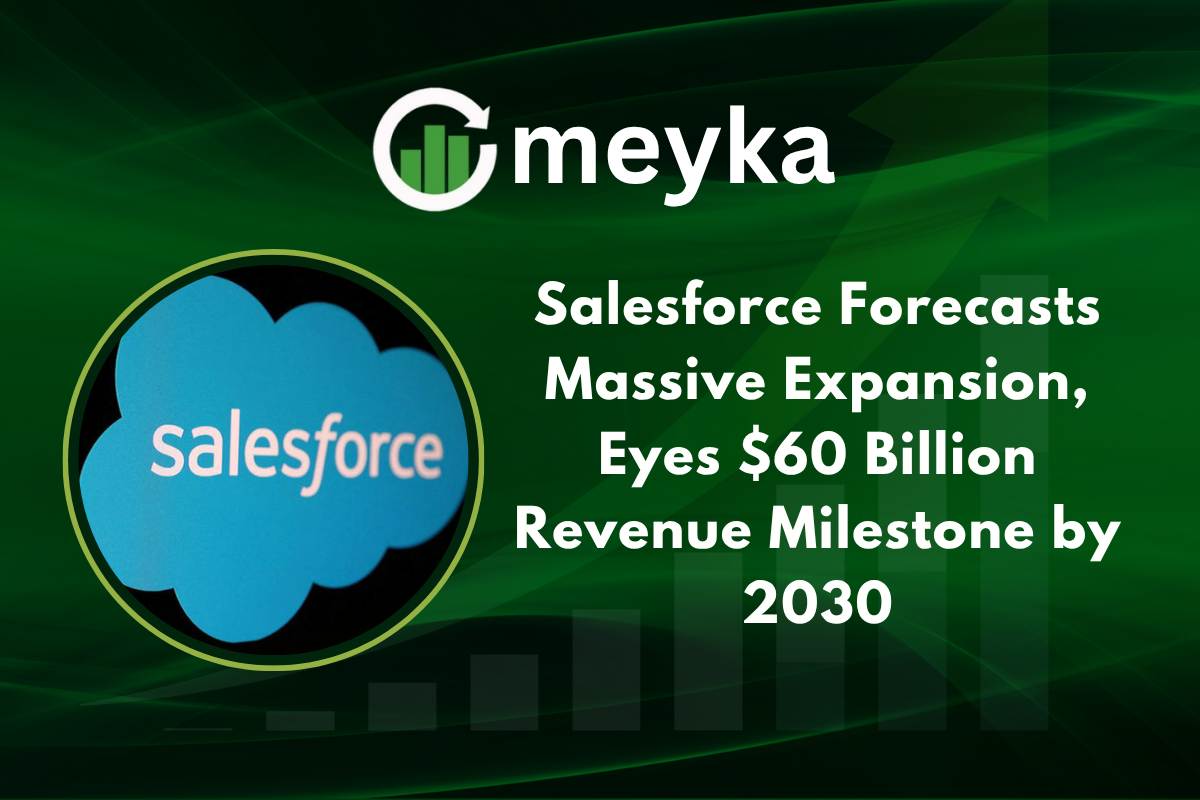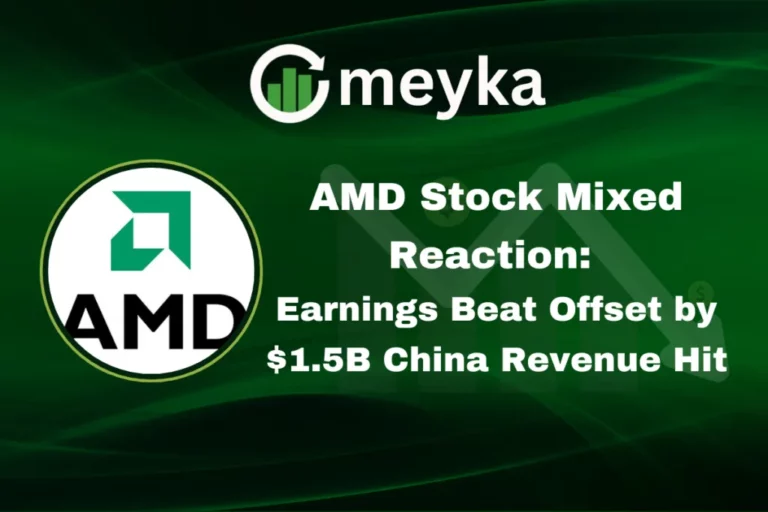Salesforce Forecasts Massive Expansion, Eyes $60 Billion Revenue Milestone by 2030
Salesforce Forecast shows big ambition. The company now expects more than $60 billion in annual revenue by 2030. This target centers on AI, cloud products, and data tools. Investors cheered the outlook, and the company outlined buybacks and deals to speed growth.
What does this mean for customers and competitors?
Salesforce Forecast Signals Bold Growth Ahead
The Salesforce Forecast is a clear signal that the company plans to scale quickly. Salesforce is the world’s leading cloud CRM provider. It says AI features and new data capabilities will expand sales and margins.
The forecast was shared at Dreamforce, and it stands above analyst consensus. That gap matters because it resets expectations for enterprise software growth.
Why is this happening?
Why Is Salesforce Confident About Hitting $60 Billion by 2030?
The Salesforce Forecast (CRM) rests on several pillars. First, AI is at the core. Salesforce is rolling AI into its platform with tools like Agentforce and Einstein GPT to automate tasks and boost sales productivity.
Second, the company is expanding its Data Cloud and data management tools. Third, strategic deals and acquisitions, including Informatica, strengthen data and integration capabilities. These moves increase the addressable market and customer stickiness.
How will AI and data drive revenue?
How the Market Reacted to Salesforce’s 2030 Projection
Markets moved quickly after the Salesforce Forecast news. Shares jumped in aftermarket trading, reflecting renewed investor confidence. Analysts and traders noted that the target exceeds the LSEG consensus of about $58.37 billion for 2030. The company also announced a share buyback program to return capital to investors, which helped lift sentiment.
What did investors ask next?
What Does This Mean for the CRM Industry?
The Salesforce Forecast reshapes the CRM landscape. Competitors like Microsoft, Oracle, and HubSpot will watch closely. Salesforce’s push into AI agents and data services raises the bar for enterprise buyers.
It may speed cloud adoption and push rivals to beef up AI and integration tools. For customers, that can mean faster innovation and stronger vendor lock in.
Will rivals keep pace?
Salesforce Forecast and Strategic Investments
Salesforce (CRM) ties the Salesforce Forecast to specific investments. That includes faster rollouts of Einstein GPT, deeper Data Cloud integrations, Agentforce automation, and the Informatica acquisition to power data governance.
The firm also plans share buybacks near $7 billion to support the stock and fund growth. These moves show that revenue goals link to both product innovation and capital allocation.
How real is this plan?
Analysts’ Opinions and Expert Insights
Experts note the Salesforce Forecast (CRM) is ambitious but plausible. Reuters and financial outlets point out that AI monetization must accelerate. Some analysts welcomed the plan, citing strong enterprise demand for AI and cloud platforms.
Others cautioned that macro uncertainty could slow corporate spending. The consensus view is hopeful but measured.
Who is right about growth?
What Challenges Could Salesforce Face?
The Salesforce Forecast (CRM) is not guaranteed. Risks include slower enterprise budgets, integration hurdles from large acquisitions, and stronger competition. Regulation and data privacy rules could complicate data-driven offerings.
Also, delivering AI value quickly is hard and requires deep customer adoption. Execution will decide whether the forecast becomes reality.
What could derail the plan?
The Bigger Picture: Salesforce’s Long-Term Vision
The Salesforce (CRM) Forecast fits into a broader long-term vision. Leadership stresses sustainable, profitable growth. Marc Benioff and the executive team position the company as an AI-first cloud platform.
They link revenue targets to platform adoption, ecosystem partnerships, and global expansion. The company also remains vocal on environmental and social goals as part of its corporate strategy.
How will this shape the company in 2030?
Social Media Buzz and Investor Sentiment
Social chatter reflected mixed excitement and skepticism about the Salesforce (CRM) Forecast. Traders posted about the stock jump and analysts shared quick takes. Influencers highlighted AI wins and the Informatica deal. Here are the tweets again for context:
What are people saying about the forecast?
Key Takeaways from Salesforce Forecast 2030
- Salesforce Forecast sets a $60 billion revenue target by 2030.
- The plan leans heavily on AI, Data Cloud, and the Informatica purchase to expand capabilities.
- The company announced buybacks to support shareholder value.
- Market reaction was positive but cautious, given macro risks and adoption timelines.
What should readers watch next?
Conclusion
The Salesforce Forecast is bold and directional. It shows confidence in AI and cloud-driven growth. The target is achievable if the company turns product announcements into real customer value. Execution and macro stability will matter.
For now, investors and customers have a clear signal: Salesforce plans to grow fast and to lead the enterprise AI wave.
FAQ’S
Many investors and tech enthusiasts see it as a bold target, expecting Salesforce to surpass $60 billion in annual revenue.
Users and investors believe Salesforce will achieve this through AI, cloud services, acquisitions like Slack and MuleSoft, and expanding enterprise adoption.
Stock traders praised the announcement, with shares jumping nearly 5%, reflecting optimism about future growth.
Tech watchers expect competitors like Microsoft, Oracle, and HubSpot to accelerate innovation to keep pace with Salesforce.
Users are concerned about market volatility, regulatory changes, inflation, and competition impacting growth.
Disclaimer
This content is made for learning only. It is not meant to give financial advice. Always check the facts yourself. Financial decisions need detailed research.






